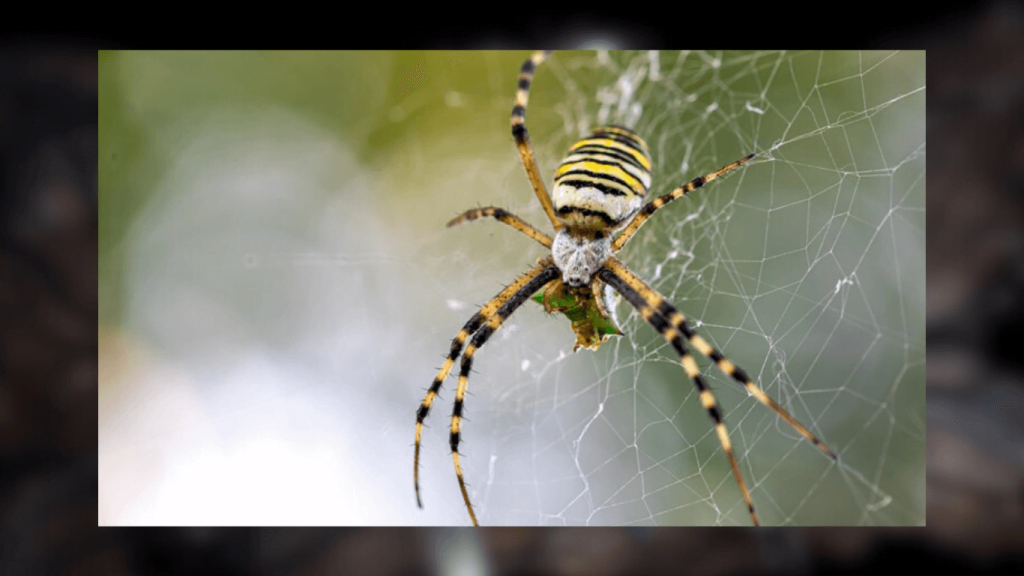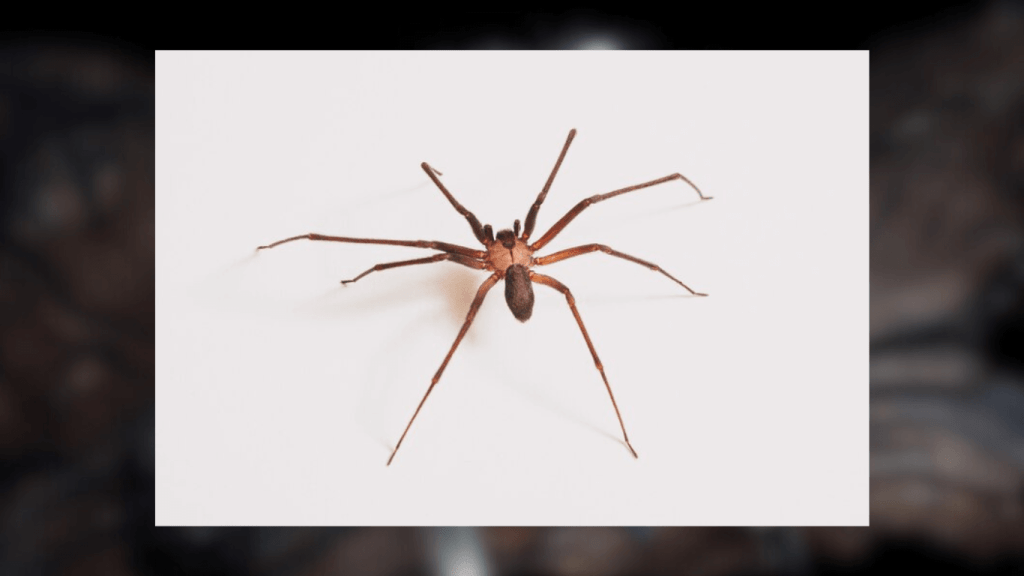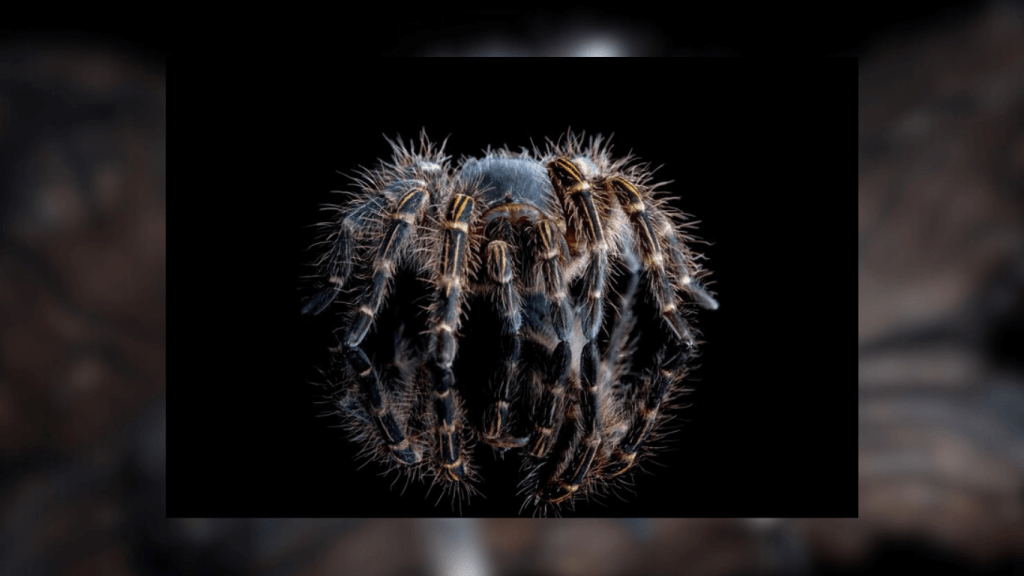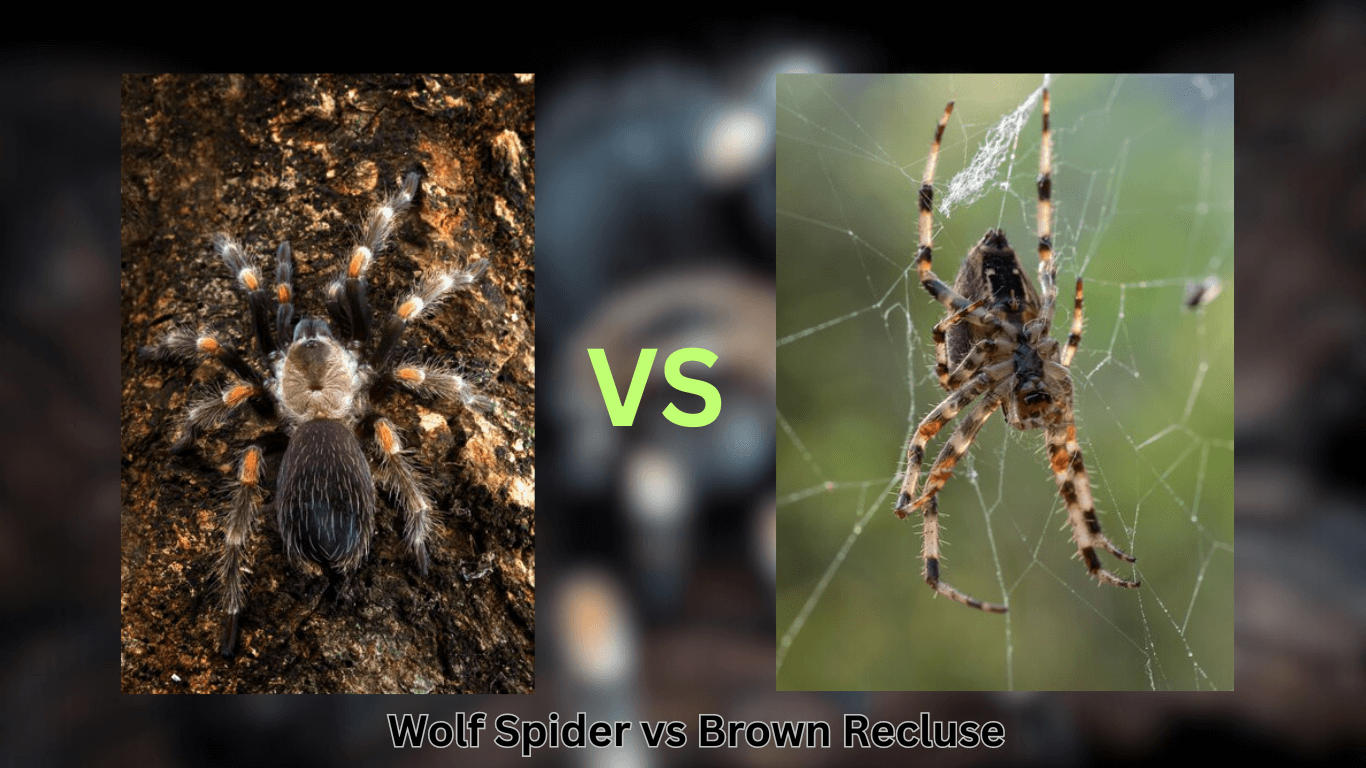Wolf spider vs Brown Recluse spiders are two common types of spiders people often encounter in their homes or outdoors. However, they are very different in terms of their appearance, habitat, behaviour, and venom. Knowing how to distinguish them can help you avoid a potentially dangerous bite from a brown recluse spider.
Which can cause severe skin damage and even death in rare cases. In this blog post, we will compare and contrast the Wolf Spider vs Brown Recluse spider and give you some tips on how to tell them apart.
How do I tell the difference between a Wolf Spider vs Brown Recluse?
While both Wolf Spider vs Brown Recluse are common in homes, OD News highlights their unique traits that aid in easy differentiation.
Size:
- Brown Recluse: Smaller, usually around 1/4 to 1/2 inch long, including legs.
- Wolf Spider: Larger, typically reaching 1/2 to 1 1/4 inches long, excluding legs.
Eyes:
- Brown Recluse: Six eyes arranged in two rows of three.
- Wolf Spider: Eight eyes arranged in two rows, with the front row containing four more giant eyes.
Colour:
- Brown Recluse: Light to medium brown, sometimes with a darker brown violin-shaped marking on its back.
- Wolf Spider: Can be brown, grey, black, or even reddish-brown, often with markings like stripes or chevron patterns.
Hairiness:
- Brown Recluse: Fine, sparse hairs on its body and legs.
- Wolf Spider: More prominent, hairy legs.
Behavior:
- Brown Recluse: Primarily nocturnal and shy, preferring to hide in dark, undisturbed areas.
- Wolf Spider: More active hunters, often seen running on the ground or walls.
Other Distinguishing Features:
- Brown Recluse: A violin-shaped marking on its back is not always visible but is a key identifier.
- Wolf Spider: Females attach their egg sacs to their spinnerets.
Here’s a quick table summarising the key differences:
| Feature | Brown Recluse | Wolf Spider |
| Size | 1/4 to 1/2 inch | 1/2 to 1 1/4 inches |
| Eyes | Six | Eight |
| Colour | Light to medium brown | Brown, grey, black, reddish-brown |
| Hairiness | Fine, sparsely hairy | More prominent, hairy legs |
| Behaviour | Shy, nocturnal | Active hunter |
| Distinguishing Features | Violin-shaped marking on the back | Females carry egg sacs |
Remember: If you see a spider and are unsure whether it’s a brown recluse or a wolf spider, it’s best to avoid caution and contact a professional pest control service. They can safely identify and remove the spider for you.
Are wolf spiders poisonous?

The Wolf Spider vs Brown Recluse often shares the blame for our arachnophobia. But let’s separate the facts from the fiction! While both pack a tiny punch, their venom potency differs significantly.
Wolf spiders, though evil, are not considered dangerous to humans. Their venom, primarily used to subdue prey, is weak and causes little more than a localised itching sensation like a bee sting. An allergic reaction might occur in rare cases, but it’s not life-threatening.
The Brown Recluse, on the other hand, deserves a little more caution. Its venom contains hemotoxic properties, potentially causing tissue damage and even necrosis (skin death) at the bite site if left untreated. So, while wolf spiders can frighten you, the brown recluse requires a bit more respect and awareness.
Are brown recluse spiders aggressive?

Have you ever encountered a creepy crawler and wondered, Wolf Spider vs Brown Recluse? Both are common houseguests, but the hermit’s reputation sends shivers down spines. While their venom can cause nasty bites, rest assured, they’re not bloodthirsty monsters hunting humans.
Like most creatures, they’d much rather avoid confrontation. Brown Recluses prefer hiding in dark, undisturbed places like woodpiles or attics. Bites typically occur only when they feel threatened, like trapped against skin or inside clothing. So, the next time you encounter one of these shy spiders, remember they’re more likely to flee than fight.
What should I do if a wolf spider or a brown recluse bites me?
While encountering a Wolf Spider vs Brown Recluse might be unsettling, most bites are harmless. However, knowing what to do if you suspect an edge can make a big difference. Here’s a quick guide:
Immediate Actions:
- Stay calm and assess the situation.
- Wash the bite area with soap and water.
- Apply a cool compress to reduce swelling.
- Elevate the affected limb if possible.
- Remove any jewellery or constricting clothing around the bite.
Seeking Medical Attention:
- Seek immediate medical attention if you experience any severe symptoms like:
- Rapid swelling or discolouration around the bite.
- Nausea, vomiting, or fever.
- Difficulty breathing.
- Muscle weakness or paralysis.
- Spreading pain or redness beyond the bite area.
- If you are unsure whether you need medical attention, it is always better to err on the side of caution and see a doctor.
Additional Tips:
- Try to capture the spider for identification, if possible. This will help your doctor provide the best possible treatment.
- Do not apply a tourniquet or ice directly to the bite.
- Do not try to cut the bite or suck out the venom.
- Monitor the bite closely for any changes in the next few days.
While Wolf Spider bites are usually mild, Brown Recluse bites can be more serious. You can ensure the best possible outcome by following these steps and seeking medical attention if necessary.
How can I prevent wolf and brown recluse spiders from entering my home?

Are they worried about unwanted guests like Wolf Spider vs Brown Recluse in your home? Fear not, fellow arachnophobe. There are several ways to keep these eight-legged critters at bay! First, seal any cracks or openings around windows, doors, and utility lines. These are prime entry points for these spiderly explorers.
Next, declutter your home, especially in dark, undisturbed areas like basements, garages, and closets. Less clutter means fewer hiding places for them to lurk. Finally, keep your yard tidy, too! Trim back overgrown vegetation and eliminate potential hiding spots like woodpiles or debris.
By following these simple tips, you can create a less welcoming environment for Wolf Spiders and Brown Recluses, encouraging them to seek greener pastures (or less cluttered attics).
Do wolf spiders eat brown recluse spiders?
The age-old question: do Wolf Spiders, those eight-legged hunters, snack on their reclusive cousins, the Brown Recluses? As it turns out, yes, they do! While not their primary food source, Wolf Spiders are fearless predators and won’t hesitate to take down a Brown Recluse if the opportunity arises.
Imagine a tiny brown gladiator facing off against a hairy, eight-eyed hunter – who do you think wins? The Wolf Spider usually emerges victorious, thanks to its larger size and speed. Additionally, their venom appears to have little effect on Wolf Spiders, making them the ultimate nemesis of the Brown Recluse.
It’s a fascinating example of predator-prey relationships in the spider world, reminding us that even the feared can become the prey in the right circumstances.
What are the typical habitats of wolf spiders and brown recluse spiders?
Wolf Spider vs Brown Recluse has different preferences. Here’s a breakdown of their typical habitats:
Wolf Spiders:
- Outdoor:
- Grasslands and meadows
- Forests and woodlands
- Deserts and mountain areas
- Near water sources like streams and ponds
- Indoor (occasional):
- Basements and crawl spaces
- Attics and garages
- Under furniture or in dark corners
Brown Recluses:
- Indoor:
- Attics and basements
- Closets and storage areas
- Woodpiles and garages
- Behind furniture or appliances
- Outdoor (less common):
- Sheltered areas under rocks or logs
- Woodpiles or sheds
- Abandoned buildings or structures
Key Differences:
- Wolf Spiders are more adaptable and can be found in various environments, both inside and outside.
- Brown Recluses prefer undisturbed, dry, and warm locations, primarily indoors.
While Brown Recluses are more common in the southern and midwestern United States, both spiders can also be found in other areas.
Are brown recluse spiders endangered?
While the Wolf Spider vs Brown Recluse can send shivers down anyone’s spine, worry not; these elusive arachnids aren’t exactly teetering on the brink of extinction. Unlike some species facing habitat loss or environmental threats, Brown Recluses are resilient and adaptable.
They thrive in undisturbed areas like attics, basements, and woodpiles, environments readily available in human-populated sizes. This allows them to maintain their populations without being significantly impacted by external factors.
Some experts suggest that their populations may increase due to human development and the creation of more suitable habitats. So, while their bites may be concerning, Brown Recluses are not an endangered species and are likely to be around for quite some time.
How do wolf spiders and brown recluse spiders reproduce?
Have they ever wondered how Wolf Spider vs Brown Recluse continues their creepy-crawly legacy? Both reproduce sexually, but their methods differ slightly. Let’s take a peek into their fascinating world of babies and egg sacs:
Wolf Spiders:
- These guys are dedicated parents. The female lays dozens of eggs in a silk sac, which she carries around attached to her spinnerets. Imagine a tiny backpack full of spiderlings! She fiercely protects her precious cargo until they hatch after about two weeks. Then, the tiny spiderlings hitch a ride on their mom’s back for a few more days before venturing into the world alone.
Brown Recluses:
- These spiders are less involved in child-rearing. After laying around 50 eggs in a silken pouch, the female Brown Recluse leaves it hidden in a safe spot, like a dark corner or under a rock. The eggs hatch in about a month, and the spiderlings emerge as independent little hunters, ready to take on the world without mom’s help.
So, while both Wolf Spiders and Brown Recluses reproduce sexually, their parental involvement takes different paths, showcasing the diverse ways these fascinating creatures ensure the survival of their species.
What are some interesting facts about wolf spiders and brown recluse spiders?
While sharing your home with eight-legged residents might not be thrilling, delve deeper into the lives of the Wolf Spider vs Brown Recluse, and you might be surprised! Here are some fascinating facts:
Wolf Spiders:
- Super moms: Mother Wolf Spiders attach their egg sacs to their spinnerets, ensuring their offspring are safe until they hatch.
- Speedy hunters live up to their name with impressive agility, chasing down prey without relying on webs.
- Venomous but not aggressive: Their venom is primarily used for capturing prey and doesn’t pose a significant threat to humans unless allergic reactions occur.
Brown Recluse Spiders:
- Violinists with a bite: The violin-shaped marking on their back is a signature characteristic, although not always easily visible.
- Nocturnal ninjas: They prefer the darkness, emerging at night to hunt for insects and other invertebrates.
- Shy and reclusive: Despite their infamous reputation, they’re not aggressive and will typically only bite when feeling threatened.
These are just glimpses into the intriguing world of Wolf Spiders and Brown Recluses. So, the next time you encounter one of these creatures, remember they’re more than just creepy crawlies – they’re fascinating animals with unique adaptations and behaviours.
Conclusion
While Wolf Spider vs Brown Recluse may send shivers down your spine, understanding their differences and behaviours can ease your fears. Remember, Brown Recluses are primarily shy and nocturnal, while Wolf Spiders are active hunters essential to the ecosystem. Though their bites can be unpleasant, they rarely pose a serious threat. By respecting their space and knowing what to do in case of an encounter, we can coexist with these fascinating creatures in our homes and the wider world.

